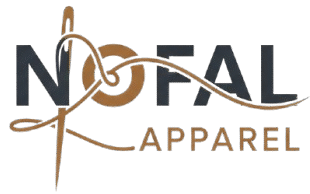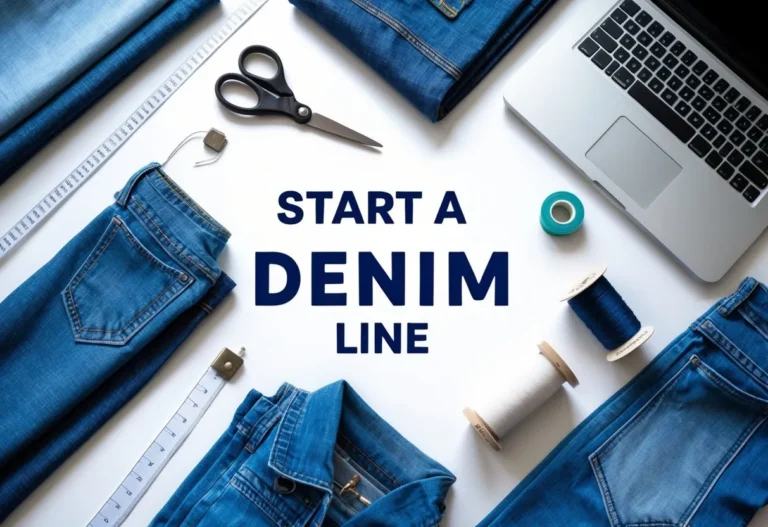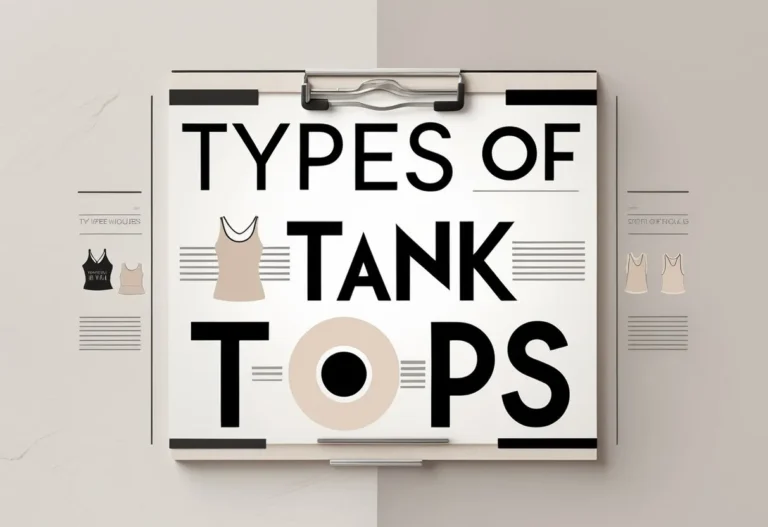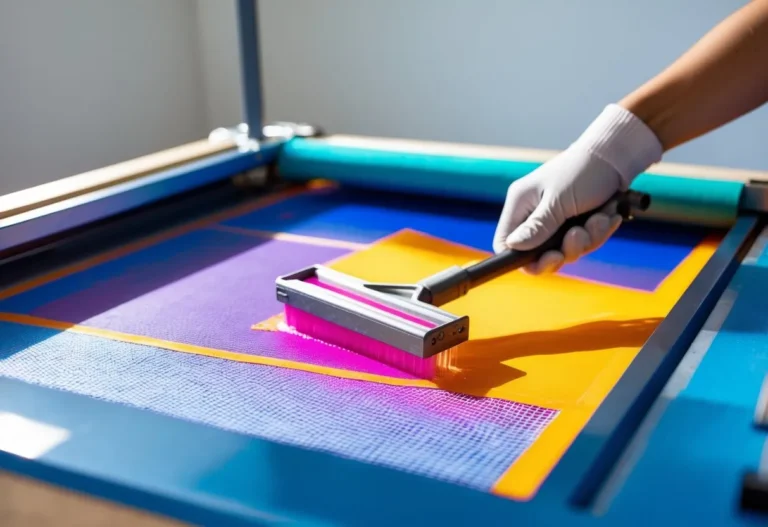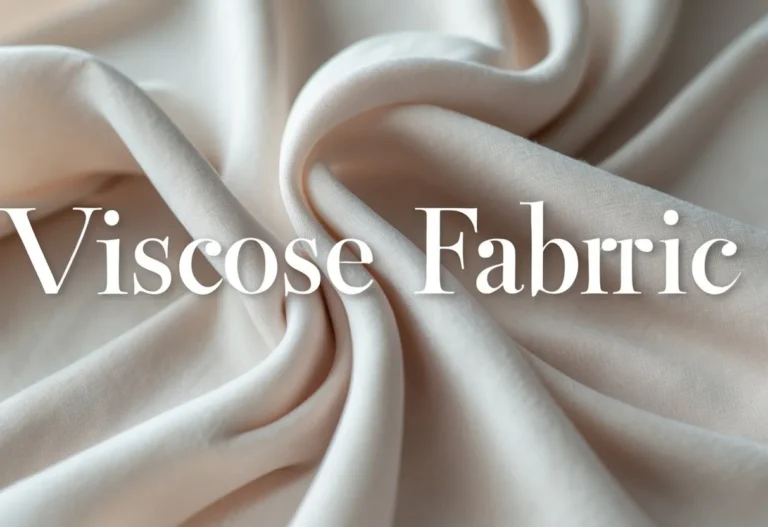Starting a print on demand business lets people sell custom products like t-shirts, mugs, and phone cases without buying any inventory first. When someone orders a product, a third-party company prints it and ships it directly to the customer. This means business owners don’t have to worry about storage space or buying products before they sell them.

A print on demand business can start with zero money upfront since products only get made after customers place orders. This makes it perfect for people who want to test business ideas without big risks. The POD market is expected to reach $59.4 billion by 2033, which shows how much this business model is growing.
The best part about print on demand is that anyone can do it. People don’t need special art skills or business experience to get started. They just need good ideas for designs and products that customers want to buy.
Key Takeaways
- Print on demand businesses require no upfront inventory costs since products are only made after customers order them
- Success depends on finding a profitable niche market and creating designs that appeal to specific customer groups
- The right supplier and online store setup are essential for delivering quality products and growing the business
What Is Print on Demand and How Does It Work?

Print on demand lets sellers create custom products without buying inventory upfront, while traditional retail requires stocking products before making sales. The POD business model offers low startup costs but comes with trade-offs like higher per-unit prices and less control over shipping.
Print on Demand vs. Traditional Retail
Print on demand works differently from regular retail stores. In traditional retail, business owners buy products in bulk before they sell anything. They store items in warehouses and ship them when customers place orders.
A POD business works the opposite way. Sellers create designs first. When a customer buys something, the print provider makes the product and ships it directly to the buyer.
Traditional retailers control their inventory and shipping. They can check product quality before selling. They also get better prices when buying large amounts.
Print-on-demand services handle everything after the sale. The seller just creates designs and lists print-on-demand products online. The print provider does the rest of the work.
This difference changes how much money sellers need to start. Traditional retail needs thousands of dollars for inventory. A pod business can start with just design costs.
Pros and Cons of POD
POD Advantages:
- No upfront inventory costs – Sellers don’t buy products before making sales
- Low financial risk – No money lost on unsold items
- Easy testing – Try new designs without big investments
- No storage needed – Print providers handle warehousing
- Global reach – Many print-on-demand services ship worldwide
POD Disadvantages:
- Higher product costs – Custom products cost more per item than bulk orders
- Less profit per sale – Print provider takes a cut of each sale
- Limited shipping control – Can’t offer same-day or next-day delivery
- Quality concerns – Sellers can’t inspect products before shipping
- Slower fulfillment – Products take longer to make and ship than pre-made items
The pod business model works best for sellers who want to test ideas quickly. It helps people start selling without much money upfront.
Finding Your Niche and Researching the Market

Selecting the right profitable niche is the foundation of a successful print-on-demand business. Smart market research helps business owners understand what customers want and find gaps in the market.
Identifying Profitable Niches
A niche is a specific group of people with shared interests or needs. Pet owners, yoga lovers, and teachers are all examples of niches.
The best niches have three key features:
- High demand from customers
- Low competition from other sellers
- Good profit potential on products
Some popular niches in 2025 include:
| Niche Category | Examples | Why It Works |
|---|---|---|
| Pets & Animals | Dog shirts, cat mugs | Pet owners spend lots of money |
| Hobbies | Gaming shirts, book bags | People love showing their interests |
| Jobs & Careers | Teacher gifts, nurse mugs | Workers want job-related items |
| Health & Fitness | Yoga mats, gym bags | Growing wellness trend |
Market gaps are areas where customers want products but few sellers offer them. These gaps create the best opportunities for new businesses.
Business owners should pick niches they understand or care about. This makes it easier to create products customers actually want.
Conducting Market Research
Market research means studying what customers buy and what they need. This step helps business owners avoid costly mistakes.
Start by looking at successful competitors. Check their best-selling products and read customer reviews. This shows what works and what customers complain about.
Customer feedback gives valuable insights about product needs. Look for comments like “I wish someone made…” or “This would be better if…” These comments reveal new product ideas.
Social media platforms show trending topics and popular hashtags. Facebook groups, Reddit communities, and Instagram posts reveal what people talk about most.
Online marketplaces like Etsy and Amazon show which products sell well. Check the number of reviews and sales rankings to spot winning products.
Survey potential customers directly through social media polls or online forms. Ask what products they would buy and how much they would pay.
Using Keyword Research Tools
Keyword research tools help business owners understand what customers search for online. These tools show search volume and competition levels.
Google Trends is a free tool that shows search popularity over time. It helps identify growing trends and seasonal patterns. Business owners can see if interest in their niche is growing or shrinking.
SEMrush and Ahrefs are paid tools that provide detailed keyword data. They show:
- How many people search for specific terms each month
- How hard it is to rank for those keywords
- What related keywords people also search for
Start with broad keywords like “funny t-shirts” then narrow down to specific terms like “funny teacher t-shirts.” More specific keywords often have less competition.
Look for keywords with decent search volume but lower competition. These represent the best opportunities for new businesses to rank well.
Use keyword tools to find gaps where people search for products but few sellers target those terms. This research helps create products that customers actively look for online.
Choosing Products and Creating Designs

Success in print-on-demand depends on picking products people want to buy and creating designs that catch their attention. The right combination of popular items and eye-catching artwork can make the difference between a struggling store and a profitable business.
Picking the Best Products to Sell
T-shirts are the most popular print-on-demand items because they work for all ages and styles. Hoodies come in second place, especially during fall and winter months. These clothing items have the biggest market and easiest designs to create.
Mugs make great gifts and have high profit margins. Tote bags appeal to eco-friendly shoppers and people who need reusable bags. Phone cases work well because everyone needs protection for their devices.
Leggings target fitness enthusiasts and fashion-conscious buyers. They require more complex sizing but can bring higher profits.
New sellers should start with 2-3 product types instead of trying everything at once. This helps them learn what works without spreading their efforts too thin.
Popular POD Products by Category:
- Apparel: T-shirts, hoodies, tank tops
- Accessories: Mugs, tote bags, phone cases
- Fitness: Leggings, sports bras, water bottles
Research what competitors sell in your niche. Check Amazon bestsellers and Etsy trending items to see what people buy most often.
Design Tools and Resources
Canva offers the easiest way for beginners to create designs. It has free templates and drag-and-drop tools that anyone can use. The platform includes fonts, graphics, and layouts made for print-on-demand products.
Adobe Illustrator works best for professional designs and detailed artwork. It costs more but gives complete control over every design element. Photoshop helps with photo editing and complex graphics.
Most print-on-demand companies provide design templates. These templates show the exact print areas and help avoid common mistakes. They also include size requirements for each product type.
Free design resources include Unsplash for photos and Google Fonts for text styles. Pinterest provides endless inspiration for color schemes and layout ideas.
Beginners should master one design tool before trying others. Starting with Canva and moving to Adobe programs later works well for most people.
Hiring Freelance Designers
Fiverr connects business owners with designers who charge $5 to $500 per project. The platform shows designer portfolios and customer reviews. Most projects cost between $10 and $50 for simple designs.
Upwork has more experienced freelance designers but higher prices. It works better for complex projects or ongoing design needs. Designers usually charge $15 to $75 per hour.
When hiring designers, provide clear instructions about colors, styles, and target customers. Share examples of designs you like and explain your brand message.
Ask for design files in the right formats. Vector files work best for most print-on-demand products. Make sure you own the rights to use the designs commercially.
Start with small test projects before hiring someone for bigger jobs. This helps you find designers who understand your vision and deliver quality work on time.
Selecting the Right Print-on-Demand Supplier

Choosing the right print-on-demand supplier affects product quality, shipping speed, and profit margins. The key is to research popular companies, test products through samples, and check quality standards before making a commitment.
Popular Print-on-Demand Companies
Several well-known companies dominate the print-on-demand market. Printful stands out as one of the most popular choices for new businesses. They offer high-quality products and fast shipping times.
Printify provides another solid option with competitive pricing. They work with multiple printing partners across different locations. This helps reduce shipping costs and delivery times.
Other notable print-on-demand services include Gooten, Teespring, and Lulu. Each company has different strengths and weaknesses.
When comparing suppliers, business owners should look at these key factors:
- Product variety – T-shirts, hoodies, mugs, phone cases
- Shipping locations – Closer to customers means faster delivery
- Integration options – Works with Shopify, Etsy, WooCommerce
- Pricing structure – Base costs plus printing fees
The location of the supplier matters a lot. A supplier in China might have lower prices but longer shipping times to US customers.
Ordering Product Samples
Smart business owners order samples before choosing a print-on-demand supplier. This step helps them see the actual product quality firsthand.
Most suppliers offer sample ordering at regular product prices. Some companies provide discounted samples for potential partners. The small cost upfront can save money and problems later.
When ordering samples, test different product types the store plans to sell. Order a t-shirt, mug, and poster if those are planned products. This gives a complete picture of the supplier’s work.
Pay attention to these details when samples arrive:
- Print quality – Are colors bright and clear?
- Material feel – Is the fabric soft or rough?
- Packaging – Does it look professional?
- Shipping time – How long did delivery take?
Take photos of the samples to compare different suppliers. Keep notes about what works well and what doesn’t.
Ensuring Product Quality
Product quality directly impacts customer satisfaction and return rates. Poor quality leads to bad reviews and lost customers.
Check the supplier’s quality control process. Good suppliers inspect products before shipping. They should have clear policies about defective items.
Look for suppliers that use high-quality materials. Cotton t-shirts should feel soft and comfortable. Mugs should have smooth surfaces without rough edges.
Read customer reviews on independent websites. Look for complaints about fading prints, poor materials, or sizing issues. Multiple similar complaints signal potential problems.
Ask the supplier about their return policy for defective products. A good print-on-demand service should replace items with printing errors or damage at no cost.
Test washing instructions if selling clothing. The best suppliers provide care labels and washing guidelines. Prints should not crack or fade after normal washing.
Setting Up and Managing Your Online Store

Your online store needs the right platform and smooth connections with print providers. Good design and easy shopping help customers buy more products.
Choosing an Ecommerce Platform
The platform you pick shapes how your store works and grows. Shopify works great for beginners. It has simple setup and connects well with print providers.
WooCommerce runs on WordPress. It gives more control but needs tech skills. BigCommerce offers built-in tools without extra apps.
Etsy is different. It’s a marketplace where millions shop already. You get customers fast but less control over your brand identity.
| Platform | Best For | Monthly Cost | Tech Skills Needed |
|---|---|---|---|
| Shopify | Beginners | $29+ | Low |
| WooCommerce | Control seekers | Free + hosting | Medium |
| BigCommerce | Growing stores | $39+ | Low |
| Etsy | Quick start | $0.20/listing | Very low |
Test each platform first. Most offer free trials.
Integrating POD with Your Store
Platform integration connects your store to print providers. This makes orders automatic. When someone buys, the provider gets the order instantly.
Printful works with all major ecommerce platforms. Printify offers more product choices. Both sync inventory and pricing.
Set up takes minutes on Shopify or BigCommerce. Connect your accounts and pick products. The system handles inventory management for you.
Test orders before going live. Place a sample order to check timing and quality. Make sure customer emails work right.
Most integrations are free. You only pay when customers order.
Designing a Great User Experience
User experience decides if visitors become buyers. Fast loading speeds matter most. Slow sites lose half their visitors in three seconds.
Product photos should be clear and big. Show your designs on real products. Use mockups that look professional.
Navigation must be simple. Group products by type or theme. Add a search bar for bigger stores.
Mobile design is critical. Most people shop on phones now. Test your store on different screen sizes.
Checkout process should be quick. Ask for only needed info. Offer guest checkout options.
Brand identity shows through colors, fonts, and style. Keep everything consistent. This builds trust with customers.
Add clear shipping and return policies. Customers want to know what to expect.
Marketing, Growing, and Running Your Print on Demand Business

Success comes from getting your products in front of the right people and keeping customers happy. Email lists help you sell more, paid ads bring new buyers, and good customer service builds trust that leads to repeat sales.
Content and Email Marketing
Content marketing brings people to your store for free. Blog posts about your niche help people find you on Google. A fitness brand can write about workout tips. A pet store can share funny dog stories.
Email marketing makes the most money from visitors who don’t buy right away. Use pop-ups to collect email addresses. Offer 10% off for new subscribers.
Send emails once a week. Share new products, behind-the-scenes content, or helpful tips. Keep emails short and fun to read.
Email types that work well:
- Welcome series for new subscribers
- New product announcements
- Holiday sales and promotions
- Customer stories and reviews
Track which emails get opened and clicked. This shows what your customers like best. Most email services show these numbers automatically.
Paid Ads and Traffic
Google Ads and Facebook ads bring website traffic fast. Start with a small budget of $5-10 per day. Test different ads to see what works.
Google Ads work well because people search for products to buy. Target keywords like “funny cat shirts” or “yoga water bottles.” Google Analytics shows which ads bring sales.
Facebook and Instagram ads let you show products to people based on their interests. Target dog lovers for pet products or gym members for fitness gear.
Key things to track:
- Cost per click
- Website traffic from ads
- Sales from each ad campaign
Start with one platform first. Learn what works before trying others. Take good photos of your products for ads. Bright, clear images get more clicks.
Customer Service and Building Trust
Good customer service turns one-time buyers into repeat customers. Answer questions within 24 hours. Be helpful and friendly in all messages.
Build customer trust with clear shipping rates and return policies. Show these on your website where people can find them easily. Hidden fees make customers angry.
Put customer reviews on product pages. Real reviews help new customers feel safe buying from you. Ask happy customers to leave reviews through email.
Trust-building basics:
- Clear contact information
- Easy return policy
- Fast shipping times
- Real customer photos
Handle problems quickly. If a shirt arrives damaged, send a new one right away. Good service after problems often creates loyal customers who tell friends about your store.
Track common questions customers ask. This helps you improve your website and products. Most problems come from unclear product details or shipping information.
Top 5 Print on Demand Clothing Manufacturers
Finding the right manufacturer is key to starting your print on demand business. The best companies help you create quality products without holding inventory.
These five manufacturers stand out for their services and reliability. Each offers different benefits for new business owners.
| Manufacturer | Key Features | Best For |
|---|---|---|
| Nofal Apparel | Custom designs, fast shipping, quality fabrics | New brands wanting premium products |
| Scrod Industries | Low minimum orders, bulk pricing, wide product range | Small businesses scaling up |
| Baagh Enterprises | Eco-friendly materials, sustainable printing, organic cotton | Environment-focused brands |
| Left Productions | Creative design support, unique printing methods, artist collaboration | Creative entrepreneurs and artists |
| Bestest Industries | Budget-friendly pricing, quick turnaround, basic customization | Startups with tight budgets |
Nofal Apparel works well for brands that want high-quality materials. They offer many fabric choices and printing options.
Scrod Industries helps businesses grow from small orders to large ones. They provide good prices when you order more items.
Baagh Enterprises focuses on green products. They use safe materials and eco-friendly printing methods.
Left Productions helps creative people turn their art into clothing. They offer design advice and special printing techniques.
Bestest Industries keeps costs low for new business owners. They provide basic services at affordable prices.
Each manufacturer has different strengths. Choose based on your budget, product needs, and business goals.
Frequently Asked Questions
How to Start a Print on Demand Business involves basic setup requirements, minimal startup costs, and understanding how to sell on different platforms. Most people can begin with just a computer and internet connection.
What do I need to get started with a business that prints products when customers order them?
A person needs a computer and internet connection to start. They also need design software to create images for products.
Free design tools like Canva work well for beginners. People can also use more advanced software like Photoshop if they know how to use it.
A business owner must pick a print on demand company to work with. These companies handle printing and shipping when orders come in.
They need to set up an online store or sell on websites like Etsy or Amazon. The store shows their products to customers who want to buy them.
Can I make a business that prints and ships products without spending money?
Yes, it is possible to start with no money upfront. Many print on demand companies let people list products for free.
The company only takes money when someone buys a product. They print the item and ship it to the customer.
Free website builders like Shopify offer trial periods. People can also sell on existing websites like Etsy for small listing fees.
Free design tools help create product images without buying expensive software. This keeps starting costs very low.
What are the steps to create a business that makes and sends custom products on websites like Etsy?
First, a person creates an Etsy seller account. This is free and takes just a few minutes to set up.
They pick what products to sell like t-shirts or mugs. Then they make designs using free or cheap design software.
Next, they connect their Etsy store to a print on demand company. Companies like Printful work directly with Etsy stores.
They upload their designs and write good descriptions for each product. Good photos and titles help customers find their items.
The last step is setting fair prices that cover costs and leave some profit. Most successful sellers research what others charge for similar items.
How much money should I have to begin a business where products are printed after they are ordered?
A person can start with zero dollars if they use all free tools. Free design software and free trials let them test ideas first.
Having $50 to $200 helps pay for better design tools and website features. This small amount covers basic monthly costs for most platforms.
More money helps with advertising to get customers faster. Many successful sellers spend $100 to $500 on ads when starting out.
The exact amount depends on what products they want to sell and how fast they want to grow. Starting small and growing slowly works well too.
What kind of plan should I follow to set up a successful business that prints items on demand?
A good plan starts with picking one type of customer to focus on. This helps create designs that specific people really want to buy.
Research what designs are popular but not too common. Look at what sells well on different websites and social media.
Start with just a few products instead of trying to sell everything. This makes it easier to focus and do things well.
Set up social media accounts to show products and talk to customers. Post regularly and respond when people ask questions.
Track which products sell best and make more like those. Remove products that nobody wants to buy after a few months.
Is it necessary to have a special paper that says I can run a business for printing and delivering products on demand?
Most places do not require special licenses for print on demand businesses. The print company handles the actual making and shipping of products.
Some cities or states want people to register their business name. This usually costs less than $100 and can be done online.
A person might need a business license if they make a lot of money. Check local rules or ask someone who knows about business laws.
Getting a business bank account helps keep personal and business money separate. Most banks let people open these accounts easily.
Tax rules apply to all businesses that make money. Keep records of income and expenses to make tax time easier.
